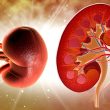Aortic stenosis is an increasingly common valvulopathy because people are living longer now. A present, the main treatment consists of surgical (SAVR) or transcatheter aortic valve replacement. (TAVR). One of the main challenges of this disease is its progression. The European guidelines recommend Doppler echocardiograms every 2 to 3 years for mild cases, mildly calcified,<a href="https://solaci.org/en/2024/05/15/aortic-stenosis-progression-evolution/" title="Read more" >...</a>
TCT 2023 | VIVA Trial: TAVR vs. SAVR in Patients with Severe Aortic Stenosis and Small Aortic Annulus
Degenerative aortic stenosis (AS) is the most common valve condition. A significant number of AS patients presents a small aortic annulus (SAA), especially women. Treating this group of patients remains challenging, seeing as they have a high incidence of suboptimal hemodynamic results. Despite the development of TAVR (transcatheter aortic valve replacement), the current guidelines do<a href="https://solaci.org/en/2023/10/31/tct-2023-viva-trial-tavr-vs-savr-in-patients-with-severe-aortic-stenosis-and-small-aortic-annulus/" title="Read more" >...</a>
SOLACI-SBHCI 2023 | TAVR – Lifetime Management of Patients with Aortic Stenosis – Dr. Ole de Backer
Read the most outstanding articles from SOLACI-SBHCI 2023 Congress. In this case, check the presentation by Dr. Ole de Backer, entitled “TAVR – Lifetime Management of Patients with Aortic Stenosis”
Aortic Stenosis and Cardiogenic Shock: Is TAVR an Option?
Cardiogenic shock (CS) in a setting of aortic stenosis is associated with high mortality rates. In consequence, surgery is generally not a possibility for this patient group, and they usually undergo aortic valvuloplasty, resulting in a mortality rate of 33%-50% at 30 days, 70% at one year, and 90% at two years. While transcatheter aortic<a href="https://solaci.org/en/2023/07/04/aortic-stenosis-and-cardiogenic-shock-is-tavr-an-option/" title="Read more" >...</a>
TAVI in Moderate Aortic Stenosis with Low Ejection Fraction
The presence of aortic stenosis, heart failure, and decreased ventricular function is associated with poor prognosis and high mortality. For this reason, both European and American guidelines classify severe stenosis as a Class I indication. There are two retrospective analyses that demonstrate the benefits of transcatheter aortic valve implantation (TAVI) via transfemoral access. The TAVR<a href="https://solaci.org/en/2023/06/16/tavi-in-moderate-aortic-stenosis-with-low-ejection-fraction/" title="Read more" >...</a>
New Markers of Aortic Stenosis Define Asymptomatic Patients
Asymptomatic aortic stenosis has been keeping us in tense stillness. However, there are new markers capable of identifying patients that might benefit from earlier intervention. In this regard, cardiovascular magnetic resonance (CMR) has been gaining its well-deserved place in cardiology and now more specifically in aortic stenosis. This study sought to validate CMR markers of<a href="https://solaci.org/en/2021/08/19/new-markers-of-aortic-stenosis-define-asymptomatic-patients/" title="Read more" >...</a>
Kidney Insufficiency and the Risk of Developing Aortic Stenosis in the Future
Chronic kidney disease, even in moderate or severe stages before dialysis, is associated with an increased risk of aortic stenosis according to this work recently published in J Am Coll Cardiol. Both share several risk factors, something that complicates the identification of the association between these diseases due to multiple confounding variables. The study<a href="https://solaci.org/en/2019/04/16/kidney-insufficiency-and-the-risk-of-developing-aortic-stenosis-in-the-future/" title="Read more" >...</a>
How long should we wait with asymptomatic aortic stenosis and preserved LVEF?
Courtesy of Dr. Carlos Fava. Asymptomatic severe aortic stenosis with preserved ventricular function is challenging. At present, it remains unclear whether we should operate or not and, according to some recent reports, neither do we know what patients will benefit from surgery. The study looked at 1678 patients with asymptomatic or minimally asymptomatic severe aortic<a href="https://solaci.org/en/2019/02/06/how-long-should-we-wait-with-asymptomatic-aortic-stenosis-and-preserved-lvef/" title="Read more" >...</a>
Are Aortic Stenosis and Kidney Dysfunction Associated?
Courtesy of Dr. Carlos Fava. Aortic stenosis happens in 2.8% of patients over 75, and is even more frequent in dialysis patients. However, it remains unclear whether kidney dysfunction increases the risk of aortic stenosis. The present study looked at 1,121,875 patients from the SCREAM project (Stockholm CREAtinine Measurements). Mean age was 50, and<a href="https://solaci.org/en/2019/01/29/are-aortic-stenosis-and-kidney-dysfunction-associated/" title="Read more" >...</a>
Aortic Stenosis and Dialysis: Is TAVR the Strategy of Choice?
Courtesy of Dr. Carlos Fava. TAVR has been shown beneficial in high and moderate risk patients, but there is a group of patients that require dialysis on account of kidney deterioration. This comorbidity is due to bad cardiovascular evolution associated to diabetes, bleeding and thromboembolic events. For some time, we have been using an<a href="https://solaci.org/en/2018/12/03/aortic-stenosis-and-dialysis-is-tavr-the-strategy-of-choice/" title="Read more" >...</a>









